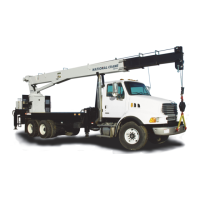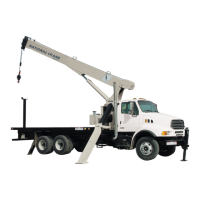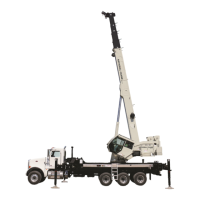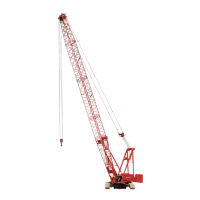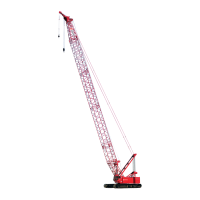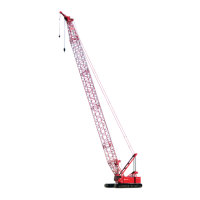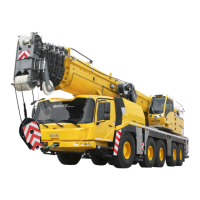National Crane Published 10-30-2014 Control # 040-09 2-23
1400H OPERATOR AND SERVICE MANUAL OPERATING CONTROLS
5. Check the environmental factors before lifting. After you
have determined that the load is within safe crane
capacity, you must check wind, crane level, outrigger
footing, or any other factors which could make handling
a maximum rated load dangerous because of adverse
conditions.
6. After determining that the load is safe to lift, turn, extend,
retract or boom up or down until boom tip is directly over
the load. Lower loadline and attach load. Tighten
loadline slightly, then boom up to raise load off the
ground. This will prevent the load from swinging out to a
greater radius. Control load by use of a non-conductive
tag line.
7. During operations the controls should always be
metered when beginning or terminating movement to
prevent sudden starting or stopping which imposes
undue shock loads on equipment. This is especially true
when handling maximum rated loads. The control
should be slightly actuated to begin movement and then
slowly increased to desired operating speed. The results
obtained from metering the oil flow with the control lever
can also be aided by carefully coordinating the throttle
control.
Shut Down and Preparation for Road Travel
1. Ensure the swingaway, if so equipped, is properly
stowed and secured or removed from crane.
2. Retract and place the boom in boom rest.
3. Ensure the center front jack is fully retracted, if
equipped.
4. Ensure the outrigger beams and stabilizers are fully
retracted with the floats properly stowed.
5. Engage the mechanical travel lock at each outrigger
beam.
6. Engage the swing brake.
7. Engage the swing lock.
8. Either the hook block may be reeved over the main
boom nose or the headache ball may be reeved over the
main boom nose or auxiliary boom nose; the other must
be removed and stowed securely before travelling. If the
hook block or headache ball remains reeved on the
boom, it must be secured at the tie down on the carrier
provided for that purpose.
9. Secure the hook block and A2B weight:
a. Slowly hoist up until there is a slight tension on the
hoist cable. It may be necessary to override the A2B
function to tension the cable.
b. The the A2B weight needs to be resting on the
wedge socket so that there is slack in the anti-two-
block-chain.
NOTE: There needs to be enough slack in the A2B chain
so that the A2B switch does not switch between
open and close during travel.
If the chain is too tight, road bounce causes the
A2B switch to open and close numerous times and
this can damage the switch.
10. Turn off the ignition and all other switches in the crane
cab.
11. Close and/or secure all windows and doors.
CAUTION
Disengage the hydraulic pumps for extended traveling,
cold weather starting, or engine checks.
Check cold tire pressure prior to extended travel. Refer to
tire inflation decal on crane.
CAUTION
Machine Damage Hazard!
Do not travel with an empty hook in a position where it can
swing freely. Either remove the hook block and/or
headache ball from the hoist cable(s) and stow securely
or make sure the hook block or headache ball is properly
secured to the tie down provided for that purpose.
Fully retract the outrigger stabilizers and properly store
the floats.
WARNING
Do not travel with swingaway extended to prevent
damage to equipment.
Failure to comply with these instructions may cause death
or serious injury.
CAUTION
Outrigger beams must be pinned for travel.
If not pinned, outrigger beams may drift out during travel.
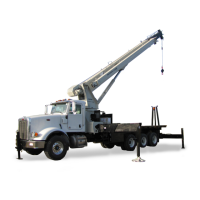
